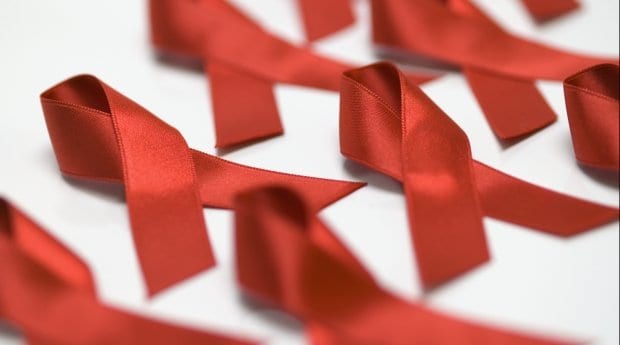Twenty-six years after its inception, the mood around World AIDS Day in Canada has shifted from urgent debates about access to drugs and medical care and grim tales of death and dying to educational campaigns and messages on long-term care.
While the number of events organized for the week preceding and following Dec 1 has held steady, or even increased slightly, the tone of the occasion has changed, according to some AIDS organizations.
In the late 1980s and early 1990s, the HIV movement was more grassroots, says Khaled Salam, executive director of the AIDS Committee of Ottawa. Back then, the situation was more dire, he says. With thousands of people dying, the messaging was more urgent and desperate because it was a crisis of life and death. During that era, occasions like World AIDS Day were marked with protests, people chaining themselves to Parliament Hill in Ottawa and political lobbying to push the government to act.
Today, World AIDS Day events across the country are more likely to range from candlelight vigils to open houses rather than protests such as AIDS Action Now’s interruption of the Ontario government’s 1993 World AIDS Day celebrations with marchers carrying huge pill containers inscribed with the names of provincial legislators.
The tone and some of the activities that worked for that period are not as relevant today, as HIV/AIDS is more of a chronic, manageable illness, Salam says.
Chris Thomas, communications director for the AIDS Committee of Toronto, agrees that there has been a general downward trend in the visibility of World AIDS Day activities because people and organizations no longer have to resort to “bolder, eye-catching events and activities” to call attention to a major crisis.
However, despite the appearance of complacency, Salam says, the fight against HIV has not been won. “We still need to educate people that the threat of infection is still there.”
Monique Doolittle-Romas, chief executive officer of the Canadian AIDS Society (CAS), says that while HIV/AIDS “is not top of the mind” as in the 1980s and ’90s, “it is critical to talk about prevention because we are still seeing about 3,000 new infections per year.” And, she adds, while not as frequent as in the past, “there are still protests around lack of service and support.”
This year CAS, which represents community-based AIDS organizations across Canada, is aware of between 85 and 100 events marking World AIDS Day. Doolittle-Romas says that’s up slightly from eight years ago when she started at CAS. Activities range from breakfasts, luncheons, galas and open houses in Vancouver and Ottawa to the Red Ribbon Human Link Multicultural AIDS awareness walk in Toronto.
Vancouver’s A Loving Spoonful expects a record turnout of more than 170 diners (up from 150 in 2013) for its annual World AIDS Day luncheon on Nov 28. Executive director Lisa Martella says the event started more than 15 years ago with 100 people attending. A premier event for the organization, which serves more than 100,000 free meals per year to people living with HIV/AIDS in the Lower Mainland, the luncheon is held the Friday before Dec 1 to allow staff and volunteers to participate in activities on World AIDS Day, she says.
Jay Koornstra, executive director of Bruce House, which provides housing support for people living with HIV and AIDS in Ottawa, has a slightly different take. “To a certain degree, there has been a decline in the number of events and a dramatic drop in participation. I’m not sure if this is due to a lack of understanding or that it’s now seen as just a chronic manageable disease.”
Koornstra says he has, however, noticed more activities in smaller communities, like the KissHIVGoodbye campaign in Guelph, Ontario.
With well-known entertainer Bif Naked and local sketch comedian Ryan Steele in the house, AIDS Vancouver hopes to make a splash with its Open House event on Dec 1. “The battle against AIDS continues, although there is an overall perception that it’s not as much of a threat,” says executive director Brian Chittock.
News in May that Vancouver’s St Paul’s Hospital was closing its AIDS ward fed into that perception, Chittock says. In fact, the ward did not close, he clarifies; it was repurposed to serve people living with HIV and addictions and the longevity-related issues and conditions they now face.
“World AIDS Day is every day for many organizations,” says Wayne Campbell, chair of Positive Living BC. Commemorating Dec 1 is “just one more thing on their to-do lists,” he says, adding that there is still significant work to be done around awareness. This year, as in the past, Positive Living has provided seed money to the Downtown Eastside HIV Consumers’ Board for its daylong event at the Carnegie Community Centre at Hastings and Main streets.
Chris Thomas, of the AIDS Committee of Toronto, agrees with Campbell that HIV/AIDS is a daily reality for people who live and work with the disease. While World AIDS Day presents an opportunity to spread the message, large-scale events take up time and money that might otherwise be spent on pushing direct resources to people and education, he says.
Editor’s note: This year marks the 26th anniversary of World AIDS Day, not the 25th anniversary as originally reported.

 Why you can trust Xtra
Why you can trust Xtra


